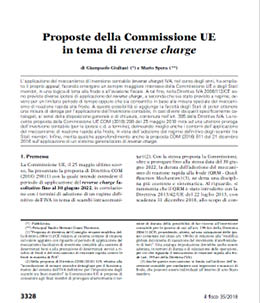-
Transactional advisory services
Find out more about the transactional advisory services of Grant Thornton Financial Advisory Services
-
Valuations
Find out more about the valuations services of Grant Thornton Financial Advisory Services
-
Mergers and acquisitions
Find out more about the merger and acquisition services of Grant Thornton Financial Advisory Services
-
Forensic and investigation services
Find out more about the forensic and investigation services of Grant Thornton Financial Advisory Services
-
Recovery & reorganisation
Find out more about the Recovery & reorganisation services of Grant Thornton Financial Advisory Services
-
Business risk services
Find out more about the business risk services of Grant Thornton Financial Advisory Services
-
Business consulting
Find out more about the business consulting services of Grant Thornton Financial Advisory Services
-
Capital market
Capital market
-
Corporate and business tax
Find out more about our corporate and business tax services.
-
Direct international tax
Find out more about our direct international tax services.
-
Global mobility services
Find out more about our global mobility services.
-
Indirect international tax
Find out more about our indirect international tax services.
-
Transfer pricing
Find out more about our transfer pricing services.
-
Litigation
Our lawyers and accountants can manage all defense measures provided not only by the Italian law, but also by EU regulations and conventions
-
Family business
Find out more about our Family business services.
-
Legal
The client can be assisted in every need and with the same care both on important operations or disputes and on simple matters

-
Back office outsourcing
Find out more about our Back office outsourcing services
-
Business process outsourcing
Find out more about our business process outsourcing services.
-
Compilation of financial statements
Find out more about our compilation of financial statements services.
-
Tax compliance
Find out more about our tax compliance services.
-
Electronic invoicing
Find out more about our electronic invoicing services
-
Electronic storage
Electronic storage is an archiving procedure that guarantees the legal validity of a digitally stored electronic document
-
Revaluation of corporate assets
Find out your civil and fiscal revaluation of tangible, intangible and financial assets
-
Human resources consulting
Find out more about our human resources consulting services.
-
Payroll
Find out more about our payroll services.
-
HR News
HR News the monthly information newsletter by Grant Thornton HR
-
Cybersecurity
GT Digital helps clients structure information security management internal functions, also through partially or totally outsourced functions
-
Agile and Programme Management
GT Digital provides support in the adoption and implementation of different portfolio management
-
Robotic Process Automation
Our “BOT Farm” can rely on digital workers able to help clients in routine activities, allowing employees to deal with more added-value activities
-
Data strategy and management
GT Digital can support clients in seizing the opportunities offered by Big Data, from the definition of strategies to the implementation of systems
-
Enterprise Resource Planning
We support clients in selecting the most appropriate ERP System according to their specific needs, helping them also understand licensing models
-
IT strategy
GT Digital supports clients in making strategic choices, identifying innovation opportunities, comparing themselves with competitors
-
IT service management
We can support with software selection and with the implementation of dedicated tools for the management of ICT processes
-
DORA and NIS 2
The entry into force of the DORA Regulation and NIS2 represents a major step towards the creation of a harmonised regulatory framework
The application of the VAT reverse charge mechanism has gained increasingly more appeal and raised an increasingly higher interest by the EU Commission and Member States in a perspective of fraud and tax avoidance prevention.
To this end, VAT Directive 2006/112/EC provides different possible applications of reverse charge, depending on whether it is provided as a final measure or for a limited period of time, or whether it is allowed basing on the Quick Reaction Mechanism against fraud. Member States have also the possibility to obtain a departure for the application of reverse charge in cases other than those specifically classified, pursuant to art. 395 of the VAT Directive.
The EU Commission proposal
The recent proposal of the EU Commission COM (2018) 298 dated 25 May 2018 aims at further extending the term for the application of the reverse charge and at better outlining the application of the Quick Reaction Mechanism against fraud, in sight of the implementation of the final exchange regime among Member States.
With the recent proposal of Directive COM (2018) 298 dated 25 May, the Commission aims at extending the reverse charge application period up to 30 June 2022, in relation to the terms for the application of a final VAT regime as concerns intra-EU exchanges. The Commission also aims at extending the term for the application of the QRM - Quick Reaction Mechanism to the same date and at regulating it more consistently and systematically.
The QRM was introduced through Directive 2013/42/EU of 22 July 2013, with deadline on 31 December 2018, in order to allow a quicker application of the derogating measure compared to the procedure based on art. 395 of Directive 2006/112/CE.
Particularly, the abovementioned article provides that the concerned Member State has to file a proper application, which must be approved by the Commission and unanimously adopted by the Council (as a decision), though with the risk of bearing high losses in revenues for the Member State affected by severe exposure to frauds.
Moreover, proposal COM (2016) 811 is aimed at introducing a “generalised reverse charge mechanism in relation to supplies of goods and services above a certain threshold”.
For further information, contact Mario Spera.

